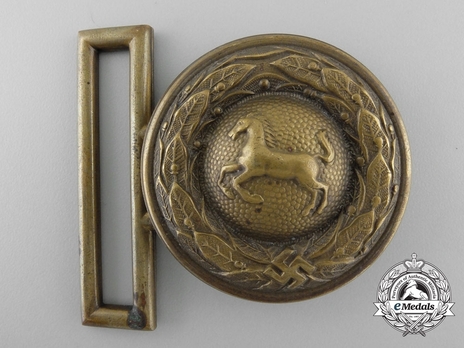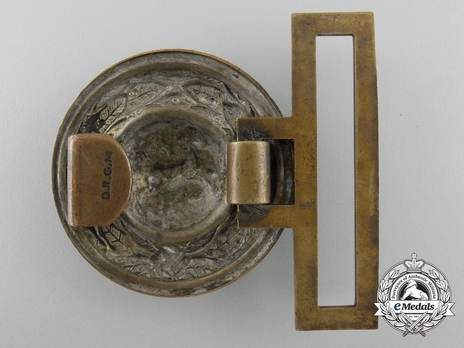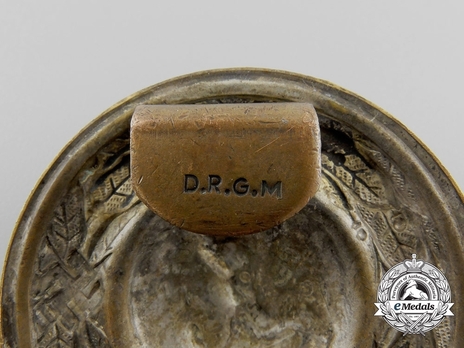Forestry Westphalia State Officials Belt Buckle
CATEGORY: Version
SKU: 75.GOR.02.02.01.007.000
Estimated market value:




Estimated market value:
In brass, reverse marked "D.R.G.M." (Deutsches Reichsgebrauchsmuster) on clip, measuring 48 mm, worn, very fine.
Like every organisation during the Third Reich, forestry was placed under the control of the NSDAP. The Reichsforstamt (National Forestry Office) was created in 1934 to replace the regional forestry departments that had existed prior to this date. The goals of the Reichsforstamt were to extract economic value in the form of timber from the forests for the German industry, as well as preserve nature and natural monuments for the people as a part of German culture.
A sub-department for professional hunters employed by the government was created. Hunting matters had formerly been a part of the Ministry for Food and Agriculture, but were now placed under the influence of the Reichsforstamt.
Private forestry matters were placed under the care of the Reichsnährstand (National Nutritional Estate) in 1941.
The Reichsforstamt was headed by Luftwaffe leader Hermann Göring as Reichsforstmeister (minister of forestry).
The Reichsbund Deutsche Jägerschaft (National Society of German Hunters) was founded in 1934 as a statutory corporation for non-professional hunters. All existing hunting societies were disbanded and memberships transferred to the Deutsche Jägerschaft. Membership was mandatory for everyone with a hunting license.
Hermann Göring led the organisation as Reichsjägermeister (minister of hunting).
The Reichsforstschutz or Forstschutzkommando (Forestry Protection Service), in 1943 renamed to Forstschutzkorps (Forestry Protection Corps), was a paramilitary force instituted in February of 1940 in the General Government (occupied Poland). Made up of German forestry officials and ethnic Germans from Poland, the Forstschutz was tasked with regular forestry duties, as well as patrolling and protecting woodlands to keep them from being used by the Polish resistance. In 1942, Forstschutz personnel was also stationed in the Eastern European occupied territories where their work was heavily focused on anti-partisan operations.
Very little is known about the Forstschutz organisation today, and all items related to it are exceedingly rare.
Forestry Officials working for the German government kept wearing belt buckles with imagery of German states even after 1934 when a national forestry organisation had been instituted. Each state featured its own belt buckle version. They were eventually discontinued and replaced with a national buckle in April of 1938.
The Westphalia (Westfalen) State Forestry buckle is either gold-coloured or silver-coloured. It features a rampant horse with the tail in an upwards position on a domed and pebbled field inside a laurel wreath with a swastika at the bottom.

Comments
Sign in to comment and reply.


Scroll Top